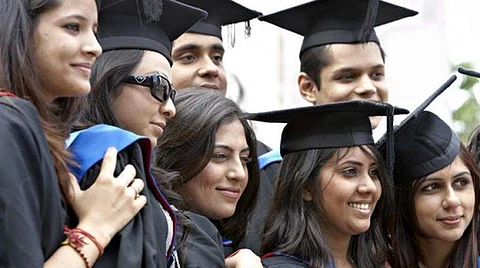

Mandatory 946 seats will be available exclusively for women who want to join IITs in the 2019 academic session as the government plans to increase the seats for women in the country’s top engineering institutions by bumping up the number of women-only seats by 167 seats — from 14 per cent (779) in 2018 to 17 per cent (946). Going by the recent trend, the number of women IITians can be speculated to be no less than 2,008.
The women-only seats, or supernumerary seats, were introduced in 2018 in order to increase the number of girl students in IITs, which continues to be heavily skewed in favour of boys.
In 2018, 1,062 girls made it to the IITs through the common merit list in the JEE (Advanced). But the government created 14 per cent, or 779 supernumerary seats, which took the number of girls in the IITs to 1,841, the highest so far. A total of 12,058 seats were on offer in the 23 IITs in 2018.
Sources in the Ministry of Human Resource Development said the success of supernumerary seats had prompted the government to increase it to 17 per cent in 2019.
The government is hoping that the creation of around 900 girl-only seats will bring a remarkable change in the gender disparity on IIT campuses.
“The plan was to take the total number of girls to 20 per cent in B Tech programmes in IITs by 2020-21 but we are targeting to achieve this in 2019 itself,” the official said.
A committee under IIT Mandi director Timothy A Gonsalves, which was formed to recommend ways to increase the enrollment of girls in undergraduate programmes at the premier technology institutes, had suggested creating supernumerary seats for women, which was accepted by the Centre.
In 2017, the girls’ admission percentage in B Tech programmes was a mere 9.3. But officials in the IITs said this year the presence of women was ensured in even those streams that were earlier shunned by them.
“While girl students often prefer computer, electric and electronic engineering to civil and mechanical, this year they were given more options,” a senior Joint Seat Allocation Authority said.
Dheeraj Sanghi, a senior professor at IIT Kanpur, said while creating women-only seat was “okay” to correct the gender imbalance at IITs, the authorities should also look at larger interventions such as ending gender biases at the examination level.
“What the government is telling girls is that while you cannot crack the entrance test, we will offer you seats through reservation. But why not end gender bias in the entrance test itself, making it easier for them to qualify?” he asked.
